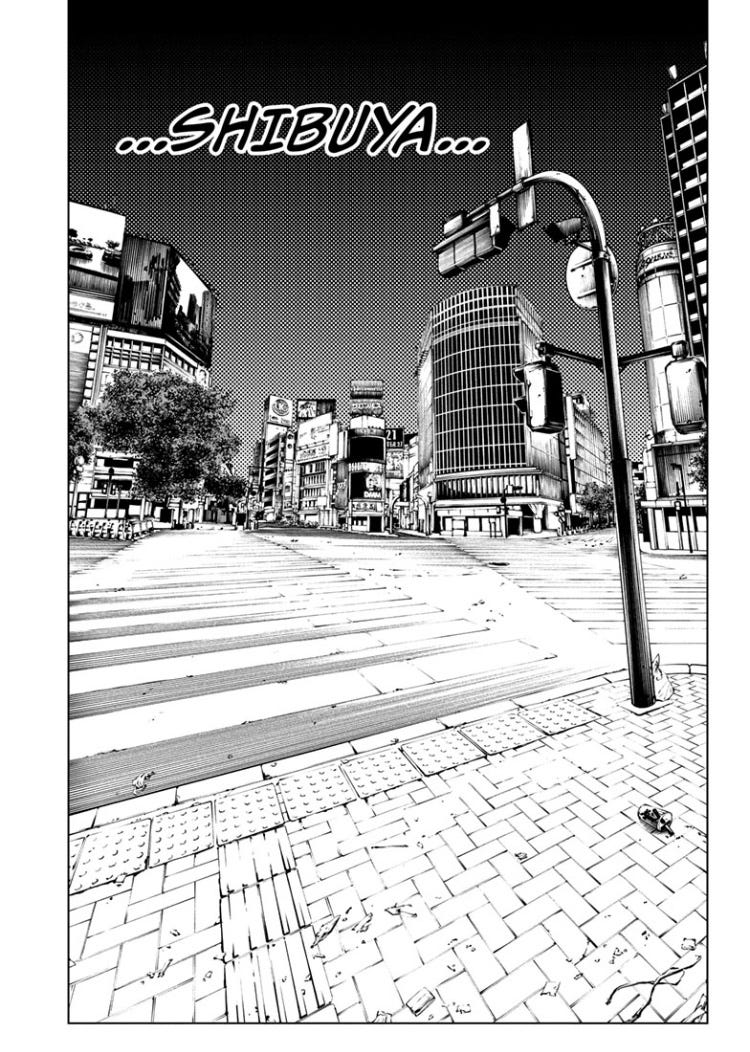A Piece Presented by T-Rod:
Gege Akutami’s hit series Jujutsu Kaisen is on a roll right now. With the manga having reached yearly sales that have eclipsed titans like One Piece and the anime’s second season setting social media on fire weekly, Jujutsu Kaisen is one of modern anime’s biggest entities.
But why though? On the surface, JJK seems to be the standard horror shonen affair: big fights, big scares, big comedy. But compared to most other series creators, Gege Akutami has employed several cursed writing techniques that have made this series stick, despite the restrictions that these techniques come with.
Join me on this writing exercise as I attempt to curse you with the brilliance of this short and impactful series!
Cursed Technique #2: Trimming Shonen Plot Structure
In our previous analysis of Jujutsu Kaisen’s writing, I alluded to Gege Akutami’s speedy pen. JJK’s plot structure is as concise and hard-hitting as a punch to the gut. I think in an age where readers and viewers have lowered attention spans, JJK’s rapid pacing is ideal. The story is currently at 233 chapters and is nearly finished at the time of this post. While this number may seem scant compared to contemporaries like One Piece (1000+ chapters) or even My Hero Academia (around 400), what this story lacks in length it makes up for in density.
What do I mean by density? In short, it’s how Gege nails setups and payoffs with a speed that I’ve never seen an author have. While other series take tons of episodes to portray the complex developments of the recently aired Hidden Inventory arc, Gege cuts to the chase to give the storyline even more impact. What caused Geto to go down his path, how did Gojo achieve his true potential, what caused the core conflict of this story? These questions are already set up prior to the arc’s start or exposited in a way that feels natural, letting the experience marinate as the plot unfolds with a series of narrative powder kegs. This speed even thematically makes sense: as a jujutsu sorcerer, things can go bad FAST.
The arcs in JJK work best as chunks of a jigsaw puzzle: they look good on their own but when put together you see how they both set up and answer questions that the next or previous arc implies. It all feels connected as a whole. If the arcs here are considered “chunks” of the puzzle, then the fights within each arc are the individual pieces.
Shonen as a genre often thrives on its fights. From Dragon Ball to Demon Slayer, the draw of the medium has been folks fighting. Jujutsu Kaisen has some of my favorite fights in anime or manga period, but it differs from its contemporaries in how each fight works as a portion of the narrative. The upcoming Shibuya Arc, for example, is absolutely loaded with fights; rather than serving as pure spectacle, however, each fight serves a purpose to the larger goal or themes of the arc. In a way, JJK’s peaks work like a tapestry, each fight threading into the next with new information, moving parts or character development that shifts the very foundation of the story. The world of Jujutsu is very much focused on that combat, and Gege channels that into their writing to make each arc a combination of stellar character beats and character beatdowns.
This speed and focus on raw brawling can put some potholes in the plot though.
Heavenly Restriction #2: Gege, We Need a Breather!
While I will praise the pace and structure of JJK, I’d be lying if I said that this type of execution didn’t occasionally shoot itself in the foot. While I love the fact that this story doesn’t meander or linger, I do wish that we had more downtime to assess the story and let our characters breathe; sometimes the fat on a steak can make its juicier bits even better. While this “no time to rest” mentality makes sense in the world of JJK, it makes key sections of it undercooked, especially in the Culling Game arc. I usually love Gege’s concepts, but there are many times where I wish they explored them more. Characters like Yuta, Tsumiki, and even Yuji have essential story moments that feel cut short because the plot is too busy sprinting along and Gege wants to wrap this up before they hit the 300-chapter mark. It can make you feel very unsatisfied, even if on paper the story beat is great and works in the context of what surrounds it.
To add on top of this occasional dissatisfaction, there is the problem of sticking to mostly fights for storytelling beats. As much as I like a melee between 2-4 characters, there can be times where you wish that there was more meaning or connective tissue in these encounters. I love the Culling Games, but the cast is dispersed for the bulk of the arc and working towards an overcomplicated goal. For many chapters, the plot feels thin, each chunk of chapters can be boiled down to “and then they fight”. I love these chapters as much as the next guy, but the confusing stakes that Gege sets up in this arc and the lack of real immediate development means you can lose interest if you aren’t in love with these characters or keeping mathematical notes on what the characters are doing.
All in all, Jujutsu Kaisen’s plot both flies and dies on its speed. At best, it’s an exhilarating experience that delivers setup and payoff with stakes and events that strike your soul. At worst, it feels like Gege can gloss over some of their most essential moments and not let the story take in the stakes and gravity of the situation. That dichotomy is fascinating to me, so I’d love to hear what you think!
Loose Thoughts:iI really do want to give my flowers to the Culling Game arc, as I feel like I’ve been overly critical of it in the past two posts, but I think it above all it exemplifies the flaws in Gege’s brilliant pen. With characters being so seperated and the stakes not as easy to understand, it can be easy to get lost in the reeds and forget about some of the series’ best moments. Shibuya on the other hand…well you’ll see. It’s a perfect story arc. Next week we’ll discuss the nitty gritty of JJK’s power system, and how its inspirations in Bleach and Hunter X Hunter give it great potential for success and error.



